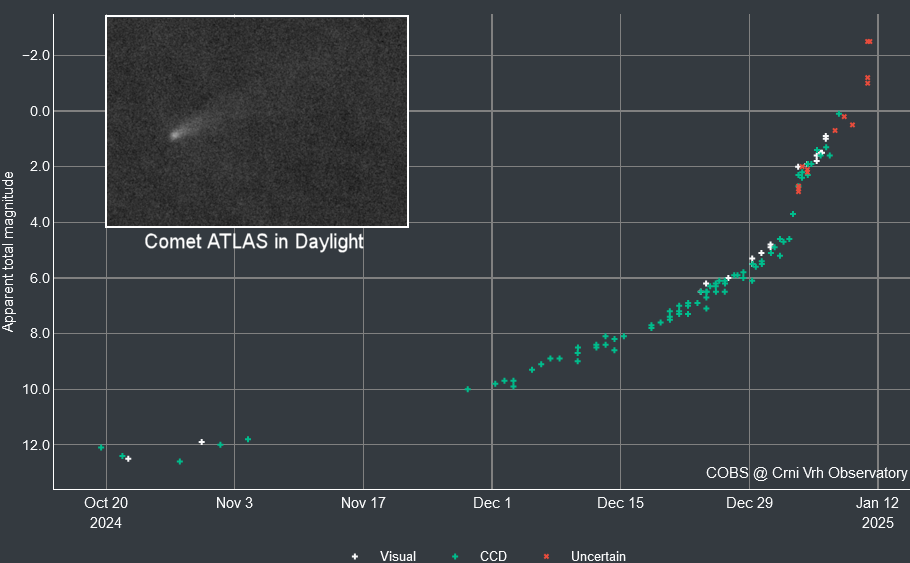Sungrazing comet at dawn
Comet ATLAS (C/2024 G3) is brightening rapidly as it falls toward the sun for a close encounter on Jan. 13th.
Petr Horálek saw it with his naked eyes before yesterday's sunrise over Spisske Podrhadie, Slovakia: "I was truly surprised," says Horálek. "While Mercury was difficult to find, the comet was an easy target. Thanks to finding it in the camera's viewfinder, I could see it immediately with my eyes too (the structures in the clouds in its vicinity helped)."
Meanwhile in England, Nick James of the British Astronomical Association photographed the sungrazer in broad daylight. His image, captured on Jan. 11th while the afternoon sun was hidden behind a tree, is inset in this light curve from the Comet Observation Database: "I was surprised to get such a strong image," says James. "The comet must be pretty bright."

James compared the comet to Venus, which was even higher in the afternoon sky, and was able to make an estimate of the comet's brightness: "It's magnitude was about -0.8. That doesn't really seem bright enough given how prominent the comet is on the image, but that is what I get!"
If current trends hold, Comet ATLAS could brighten another 2 to 4 magnitudes by Jan. 13th when the comet swoops only 0.09 AU from the sun. Although it will likely be brighter than Venus, only the most experienced observers should attempt to photograph the comet so close to the sun. A beam of accidental sunlight magnified by optics can really hurt your eyes.
If Comet ATLAS survives the heat, it could become a nice object in the evening sky next week. Southern hemisphere observers are favored, but many northerners will be able to see it, too. Read "Prospects for C/2024 G3 (ATLAS)" by Nick James for observing tips.
